Basic techniques of classic stroking massage. Massage techniques
The massage procedure consists of preparatory, main and final parts. The purpose of the preparatory part of the massage is to influence the exteroreceptor apparatus of the skin and improve the blood and lymph flow of the massaged area.
In the preparatory part, classical massage techniques are used - stroking, rubbing and kneading the muscles.
In the main part, special segmental massage techniques are performed.
In the final part, techniques are used: stroking, stretching, shaking the muscles.
Patient position: lying on his stomach, head turned to the side, arms extended along the body, feet hanging over the edge of the massage couch; lying on your back or sitting.
Sequence of the procedure: 1) back massage, 2) neck, 3) chest, 4) belly, 5) upper limbs(massage cervicothoracic region, shoulder joint, shoulder, elbow joint, forearm, wrist joint, hand, fingers), 6) lower extremities (massage the lumbar spine, back and then the front surface of the thigh, knee joint, lower leg, ankle joint, foot), 7) biologically active points (BAT). If there is an injury or disease of the limbs, the massage begins with the spine and healthy limb.
Back massage start with planar stroking, rubbing from the lower back to cervical spine(5-6 massage movements each). Then knead one half of the back with both hands, then the other for 1-2 minutes. After completing this technique, the entire back is stroked again (3-5 movements).
After the preparatory massage, they move on to massage the deeper layers of muscles, including special massage techniques.
The segmental massage technique includes various techniques: rubbing, stretching, kneading, pressure (pressure), vibration (Fig. 1,2,3,4).

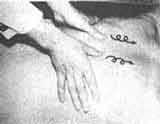
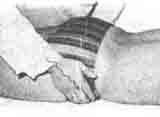
Fig.1,2,3,4. Segmental massage technique
Rubbing (sawing) It is performed by spreading the thumbs and forefingers of both hands, located on the sides of the spinal column so that a skin ridge appears between them. After this, both hands make sliding (sawing) movements in opposite directions, and the fingers should move the skin and underlying tissue, and not slide over it. This technique massages the entire back (spine) from bottom to top (from segment to segment). The technique is repeated 5-7 times.
 Rubbing (sliding) has several varieties. The first option is performed with both hands: both hands with the palmar surface are located to the left and right of the spinal column so that a skin fold is formed between them (Fig. 5). Then one hand moves forward (up), and the other moves backward (down) with upward movement. This technique can also be used for abdominal massage. The technique is repeated 3-5 times.
Rubbing (sliding) has several varieties. The first option is performed with both hands: both hands with the palmar surface are located to the left and right of the spinal column so that a skin fold is formed between them (Fig. 5). Then one hand moves forward (up), and the other moves backward (down) with upward movement. This technique can also be used for abdominal massage. The technique is repeated 3-5 times.
![]() In the second option, the skin is grabbed in the area of the II-III vertebrae with the thumbs and fingers of both hands (see Fig. 6), moving them from bottom to top from lumbar region spinal column to cervical.
In the second option, the skin is grabbed in the area of the II-III vertebrae with the thumbs and fingers of both hands (see Fig. 6), moving them from bottom to top from lumbar region spinal column to cervical.
The third option is performed with the index finger and thumb: the skin is folded and massage movements are made from bottom to top.
Fourth option: with the palmar surface of the right hand, they press the skin tightly and move it towards the left hand, while with the left hand they make the same movement towards the right hand. Massage movements are directed from the lumbar spine to the cervical spine. The technique is repeated 3-5 times.
 Rubbing the spinous processes spine is performed with the tips of the I-II-III fingers of both hands. The fingers are positioned so that there are one or two spinous processes between them. Each hand makes small circular movements directed in opposite directions, in depth, near and below the spinous process (between the spinous processes of adjacent vertebrae). This technique can be performed with the thumbs and index fingers of both hands. Massage movements are made from the lumbar spine to the cervical column. The technique is repeated 3-5 times.
Rubbing the spinous processes spine is performed with the tips of the I-II-III fingers of both hands. The fingers are positioned so that there are one or two spinous processes between them. Each hand makes small circular movements directed in opposite directions, in depth, near and below the spinous process (between the spinous processes of adjacent vertebrae). This technique can be performed with the thumbs and index fingers of both hands. Massage movements are made from the lumbar spine to the cervical column. The technique is repeated 3-5 times.
 Rubbing in the subscapular area it is performed in this way: The massage therapist fixes the patient’s left shoulder with his left hand, and with his right hand rubs with his fingertips along the edge of the shoulder blade and under it (Fig. 8). This type of rubbing can also be done with your thumb. At the same time left hand The patient is located on the lower back. The technique is repeated 5-7 times.
Rubbing in the subscapular area it is performed in this way: The massage therapist fixes the patient’s left shoulder with his left hand, and with his right hand rubs with his fingertips along the edge of the shoulder blade and under it (Fig. 8). This type of rubbing can also be done with your thumb. At the same time left hand The patient is located on the lower back. The technique is repeated 5-7 times.
Represents grasping, squeezing, pressing, squeezing, rubbing or stretching tissues.
Kneading ("drilling") performed with II-IV fingers of the right (or left) hand. When massaging the segmental zones of the back, the hand is positioned so that the spinous processes of the spinal column are between the thumb and the other fingers: fingers II-IV make circular, helical movements towards the spinal column with the displacement of all tissues, while the thumb serves as a support. The “drilling” technique can be performed with both hands: helical massage movements are made with the pads of the thumbs towards the spinal column (or clockwise) from bottom to top (from the lumbar to the cervical region), the remaining fingers serve only as a support (see Fig. 3). The technique is repeated 3-5 times.
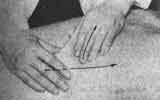 Kneading ("squeezing") performed with both hands. Grabbing the muscle with one hand, use the other to squeeze under the base of the raised muscle and knead it. With this technique, hand movements should be soft and rhythmic (Fig. 9). The technique is repeated 3-5 times.
Kneading ("squeezing") performed with both hands. Grabbing the muscle with one hand, use the other to squeeze under the base of the raised muscle and knead it. With this technique, hand movements should be soft and rhythmic (Fig. 9). The technique is repeated 3-5 times.
 Kneading ("pressure") performed with the pads of the thumbs. The movements are directed deep into the tissues with a subsequent weakening of the pressure (Fig. 10). This technique can be performed with the thumb of the right hand, weighted with the left hand, as well as with fists, pressing the thumb to the rest (Fig. 11). The hand is positioned vertically in relation to the spine. The technique is repeated 5-7 times.
Kneading ("pressure") performed with the pads of the thumbs. The movements are directed deep into the tissues with a subsequent weakening of the pressure (Fig. 10). This technique can be performed with the thumb of the right hand, weighted with the left hand, as well as with fists, pressing the thumb to the rest (Fig. 11). The hand is positioned vertically in relation to the spine. The technique is repeated 5-7 times.
Kneading (pinch) performed on the back and shoulder muscles with the thumb, index and middle fingers right hand until the skin turns red. Massage movements are directed from bottom to top. This technique can be performed with both hands, when the thumbs are opposite the rest, the skin is folded and pulled back with the rotation of the fingers. Repeat the procedure 3-5 times.
Kneading ("shifting") has several options. The first option is carried out using the pads of the thumbs in a straight line (the fingers are located 2-3 cm away from the spinous processes), pressing them on the tissues and moving them from the lumbar region to the cervical region. Repeat 3-5 times.
The second option is also performed with the thumbs, only the movements go away from the spinous processes, and in thoracic region- along the intercostal spaces. Repeat each movement 2-3 times.
Kneading ("spiral") performed with the pads of the II-V fingers with weights. Pressing deeply on the massaged tissues, they “spiral” along the spine, starting from the lumbar region and ending with the cervical region. Repeat the movements 3-5 times on each paravertebral area.
Kneading with the heel of the palm(or two palms) is carried out straight and spiral from the lumbar spine to the cervical spine. Paravertebral areas are massaged on both sides. Massage movements are repeated 3-5 times on each side.
Kneading ("pressure") carried out with the pads of the thumbs in a spiral from the lumbar to the cervical. Repeat 2-3 times on each massaged side. First, deep penetration into the tissues is carried out, followed by a spiral displacement.
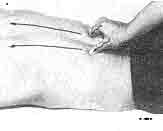 Spot vibration paravertebral region is carried out by a large and index fingers(forming like a fork). Pressing your fingers tightly, make quick oscillatory movements (see Fig. 12). Duration up to 1.5 minutes. Then the fingers are moved to other massaged points (zones). Vibration can be performed with the pad of your thumb or index finger.
Spot vibration paravertebral region is carried out by a large and index fingers(forming like a fork). Pressing your fingers tightly, make quick oscillatory movements (see Fig. 12). Duration up to 1.5 minutes. Then the fingers are moved to other massaged points (zones). Vibration can be performed with the pad of your thumb or index finger.
 Vibration with the base of the palm performed along the lines of the paravertebral region. Pressing the base of the palm tightly against the massaged area, make zigzag movements from the lower back to the cervical spine (Fig. 13).
Vibration with the base of the palm performed along the lines of the paravertebral region. Pressing the base of the palm tightly against the massaged area, make zigzag movements from the lower back to the cervical spine (Fig. 13).
Kneading (stretching) pads of the thumbs of the paravertebral region. Press the pads of your fingers tightly against the area being massaged, press lightly on the muscles and move one finger (of the right hand) up, the other finger (of the left hand) down. Make movements softly and smoothly. Then, without taking your fingers off the massaged area, move them towards the spine (left hand) and away from the spine ( right hand). Repeat 3-5 times. Massage movements are performed from the lumbar region to the cervical region.
 - sliding of the hand (hands) along the massaged surface of the body. The skin does not move. Types of stroking: planar, grasping (continuous, intermittent).
- sliding of the hand (hands) along the massaged surface of the body. The skin does not move. Types of stroking: planar, grasping (continuous, intermittent).
 Stroking is performed with the palmar and dorsum of the hand(s), pad thumb(in small areas of the body), pads of the II-V fingers, the base of the palm, fists (see Fig. 14, 15).
Stroking is performed with the palmar and dorsum of the hand(s), pad thumb(in small areas of the body), pads of the II-V fingers, the base of the palm, fists (see Fig. 14, 15).
Consists of displacement, movement, stretching of tissues in various directions. In this case, the skin moves along with the massage therapist’s hand. Rubbing is performed with the palmar surface of the hand, the tubercles of the fingers, the pad of the thumb (fingers), II-V fingers, the base of the palm, fists, the ulnar edge of the hand, the bony protrusions of the phalanges of the fingers bent into a fist
Consists of continuous (or intermittent) capture poking, lifting, squeezing, squeezing, squeezing, moving tissue (mainly muscles). Kneading is performed with one or two hands (see Fig. 16; 17; 18).
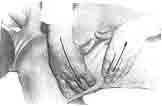

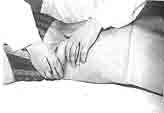
Transferring oscillatory movements to the massaged area of the body, produced evenly, but with different speeds and amplitudes.

Vibration is performed by the thumb(s), index and thumb (or index and middle, fingers forming a fork) fingers, palm, heel of the palm, fist (see Fig. 19). Types of vibration: continuous (stable, labile), intermittent.
Kneading (stretching) muscles is done like this. Grasping the muscle between two hands (the hands are placed on the muscle at a distance of 3-5 cm), stretch it, followed by moving the hands back and forth (one hand moves away from you, the other toward you). Such movements are repeated several times. Muscle stretching is performed by changing the position of the hands on the massaged area of the body. This technique is used on the muscles of the back and limbs. It can be used for pre-launch and recovery massage. The technique is repeated 3-7 times.
Chest massage is carried out using a specially developed method, taking into account the segmental structure of the lungs and bronchial tree, the characteristics of lymph and blood circulation in this area and the ventilation of individual segments. The massage therapist stands to the right of the person being massaged.
First, the chest is stroked and rubbed, then the intercostal muscles are rubbed, while the massage therapist’s hands are positioned parallel to the ribs and slide from the sternum to the spine. Next, various parts of the chest are massaged. Initially, the massage therapist’s hands are on its inferolateral section (closer to the diaphragm) and during the inhalation of the massaged person slide to the spine, and during exhalation - to the sternum, while towards the end of the exhalation the chest is compressed (compressed), then both hands are transferred to the armpits , and the same movements are repeated. After this, an oblique chest massage is performed, when one hand of the massage therapist is in the axillary region, the other on the inferolateral surface of the chest (closer to the diaphragm) and the chest is also compressed at the height of exhalation. Then the position of the hands changes.
Such techniques should be carried out within 1-2 minutes. To prevent the patient from holding his breath, the massage therapist gives him the command “inhale”, while his hands slide to the spine, and at the command “exhale” - to the sternum, compressing the chest towards the end. Then the patient is asked to calmly breathe “with his stomach.”
Massage of the respiratory muscles causes increased impulses from the primary endings of the muscle spindles and involvement large number motor neurons, which leads to increased contraction of the intercostal muscles. Afferent stimuli from the receptors of the muscular-articular apparatus of the chest are sent to the respiratory center along the ascending tracts of the spinal cord (V.I. Dubrovsky, 1969, 1971; S. Godfrey, E. Campbell, 1970). As for the diaphragm, it is poor in its own receptors. There are quite a few muscle spindles in it, and most of them are the source of afferent discharges, signaling only the beginning and end of inspiration, but not its progress (M. Corda et al, 1965). The afferent system that regulates contractions of the diaphragm is probably the mentioned receptors of the lungs and intercostal muscles (V.I. Dubrovsky 1969,1971,1973; V.D. Glebovsky, 1973).
Massage of the chest, intercostal muscles, diaphragm and compression of the chest (as you exhale) affects special receptors in the lung tissue, which are connected to the endings of the sensory fibers of the vagus nerves that branch in the lung tissue.
Stretching the lungs during inhalation reflexively inhibits the inspiratory activity of the respiratory center and causes exhalation, which we stimulate by active compression of the chest (V.I. Dubrovsky, 1973). By influencing the sensory nerves of the diaphragm and chest muscles with massage, we have a reflex effect on the respiratory center.
 The procedure is carried out with the patient lying on his stomach, his hands placed under his forehead, or sitting with his hands on his knees. A neck massage should be more gentle than a back or lumbar massage. The lateral surfaces of the neck are stroked with both hands, and the scalene and sternocleidomastoid muscles are kneaded (see Fig. 20). Duration 1-2 minutes. When performing a neck massage, you need to take into account the anatomical and physiological characteristics of this area. Do not press on the vessels or stroke the area of the vascular bundle for a long time because of the possible appearance of weakness and dizziness.
The procedure is carried out with the patient lying on his stomach, his hands placed under his forehead, or sitting with his hands on his knees. A neck massage should be more gentle than a back or lumbar massage. The lateral surfaces of the neck are stroked with both hands, and the scalene and sternocleidomastoid muscles are kneaded (see Fig. 20). Duration 1-2 minutes. When performing a neck massage, you need to take into account the anatomical and physiological characteristics of this area. Do not press on the vessels or stroke the area of the vascular bundle for a long time because of the possible appearance of weakness and dizziness.
Abdominal massage performed lying on your back, legs bent at the knees and hip joints. First, planar stroking is done clockwise, kneading and “pinch” technique. Stable continuous vibration is used in the diaphragm area. Finish the massage with diaphragmatic breathing. Duration 3-5 minutes.
Massage of the upper and lower extremities starts from the proximal sections. First, the impact is made on spinal column(paravertebral regions), the innervation of the muscles of the upper limb comes from segments C1-8, and the lower - from D11-12, L1-5. 5, S1-5.
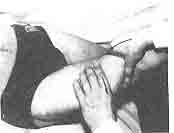 Massage is carried out by plane and grasping stroking, rubbing, longitudinal and transverse kneading (see Fig. 21). Duration 5-10 min.
Massage is carried out by plane and grasping stroking, rubbing, longitudinal and transverse kneading (see Fig. 21). Duration 5-10 min.
V.I. Dubrovsky "Sports massage" 1994 Publishing house "Step"
The correct massage technique promotes health improvement, physical rehabilitation after various diseases and injuries, rejuvenation of the body, and also serves in an efficient way maintaining physical strength and vitality in general. In this blog article, you will find all the necessary information, taking into account which massage will bring the greatest benefit.
First of all, the massage therapist should take into account the physical condition of the client. The procedure is contraindicated for people with high/low temperature, diseases thyroid gland, heart, enlarged lymph nodes, carrying infectious diseases, having varicose veins, malignant tumors. In case of this, a mandatory consultation with a doctor is required. High/low blood pressure, benign formations, pregnancy, as well as damage to the skin require the use of special techniques. Depending on the indications and desired result, massage is divided into general (for the whole body), local (for certain areas of the body).
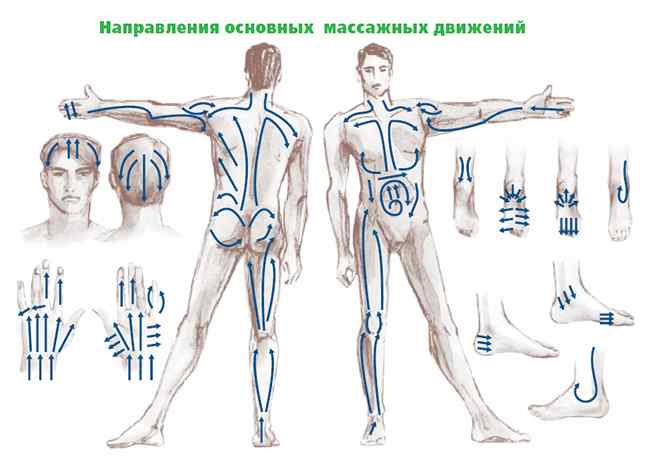
General massage is carried out in a certain sequence, the most important thing is that the correct massage technique is performed, there is a technique: back surface common limbs, the anterior surface of the upper limbs, the collar area (from the beginning of the shoulder blades, including the shoulders, neck), the anterior surface of the chest, abdomen, the anterior surface of the lower extremities. The duration of a general massage can range from 1 hour to 100 minutes.
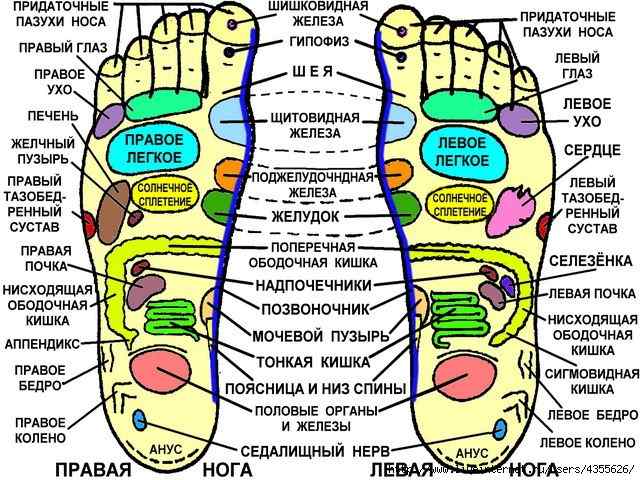
The starting position for general massage involves lying on your stomach. Rollers are used: for lumbar lordosis (deflection under the lower back) a small roller in order to straighten the client’s back, as well as a roller large sizes under the ankle joints. In the supine position, rollers are used under the cervical lordosis (bending) and under the knee joints. The massage technique includes five classic techniques:
It is also worth recalling a few subtle, but no less important details - these are the requirements for a massage therapist. Do not forget that the massage therapist must not have any skin diseases. To avoid injury to the client’s skin, before the procedure, remove all jewelry from your hands and make sure that your nails are no longer than two to three millimeters.
Remember that the right massage can replace many medications and simply improve your mood!
Look interesting video on topic:
Any massage is a complex of massage techniques and their implementation techniques that alternately replace each other. During massage, certain basic and additional techniques, which can be conditionally grouped into five main groups:
- stroking
- trituration
- squeezing
- kneading
- vibration
In turn massage techniques can be classified as:
- medium-deep (squeezing, rubbing, stroking)
- deep (kneading)
- drums (vibration)
Basic massage techniques
This is the massage technique that is most often used. Stroking involves sliding your hands or arms over the skin. The skin should not move when stroking, the direction should be only along the flow of lymph.
Basic types of stroking:
- planar (deep and superficial)
- grasping (deep and superficial)
Additional stroking techniques:
- comb-shaped
- ironing
- cruciform
- pincer-shaped
- rake-shaped
Consists of stretching, moving, displacing tissues in different directions. When rubbed, the skin moves along with the massage therapist's hands. Rubbing has a deeper effect on the skin than stroking.
Rubbing is performed:
- heel of the palm
- palmar surface of the hand
- tubercles of the thumbs
- bony protrusions of the phalanges of the fingers bent into a fist
- fists
- pads of the index or middle or second to fifth fingers
- ulnar edge of the hand (or forearm)
Rubbing is performed with one or two hands:
- transversely
- longitudinally
- zigzag
- circularly
- spirally
Additional rubbing techniques:
- sawing
- shading
- planing
- pincer-shaped
- rake-shaped
- comb-shaped
- crossing
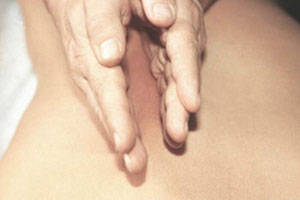 |  |
It's just deep stroking. But unlike stroking, squeezing not only affects the skin, but also the superficial layer of muscles, connective tissue and subcutaneous tissue.
The main squeezing techniques include:
- squeezing with the edge of the palm
- cross squeeze
- two-handed push-up (with weights)
- squeezing with the heel of the palm
 | 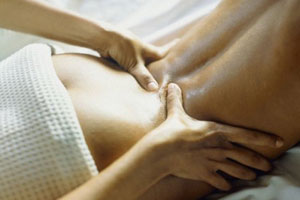 |
This is the main massage technique and is considered the most difficult to perform. Kneading is given great importance. In the general massage scheme, kneading takes up 60-75 percent of the total massage time.
Kneading consists of:
- squeezing
- capture
- shifting
- rubbing
- squeezing
- lifting
- grinding
- push-ups
Types of kneading:
- continuous
- intermittent
Additional kneading techniques:
- pincer-shaped
- bias
- pumping
- squeezing
- stretching
- topping
- pressing
- comb-shaped
- wallow
 | 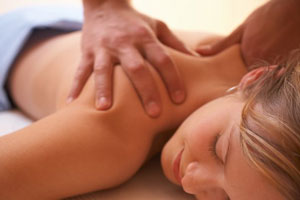 |
This is the transmission of oscillatory movements to the massaged area of the body, produced evenly, but with different amplitudes and speeds. Vibration has a variety of effects on deep-lying bones, nerves, and tissues. The movements of the massage therapist's hands during vibration should be painless, soft and gentle. Vibration causes responses such as viscero-visceral, motor-visceral and cutaneous-visceral reflexes.
Vibration is performed:
- palmar surface
- fist
- distal phalanges of one finger, thumb and index, thumb and other fingers
Types of vibration:
- continuous (labile and stable)
- intermittent
Additional continuous vibration techniques:
- destruction
- planing
- crushing
- pushing
Additional intermittent vibration techniques:
- pat
- beating
- chopping
- punctuation
- flogging
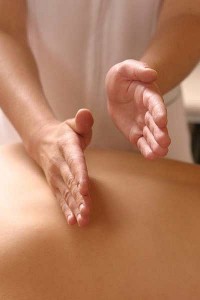 | 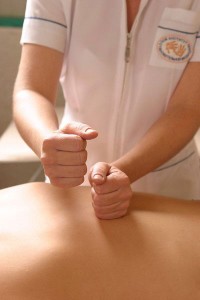 |
The massage should begin with stroking, due to which the muscles relax due to pleasant sensations. After stroking, rubbing and squeezing are performed, then kneading and vibration. Between everyone massage techniques Stroking is done, which ends the massage procedure itself.
When carrying out a massage procedure, it is necessary to alternate all techniques, without taking breaks between them, one technique should smoothly transition into another. Also, do not massage the lymph nodes.
You need to start the massage gently and gently, then gradually intensify the techniques, and at the end of the procedure repeat relaxing, soft techniques again. The number of repetitions of certain massage techniques depends on the individual characteristics of the patient and other certain factors (health status, age, etc.). Some massage techniques need to be repeated up to 4-5 times, and others much less often.
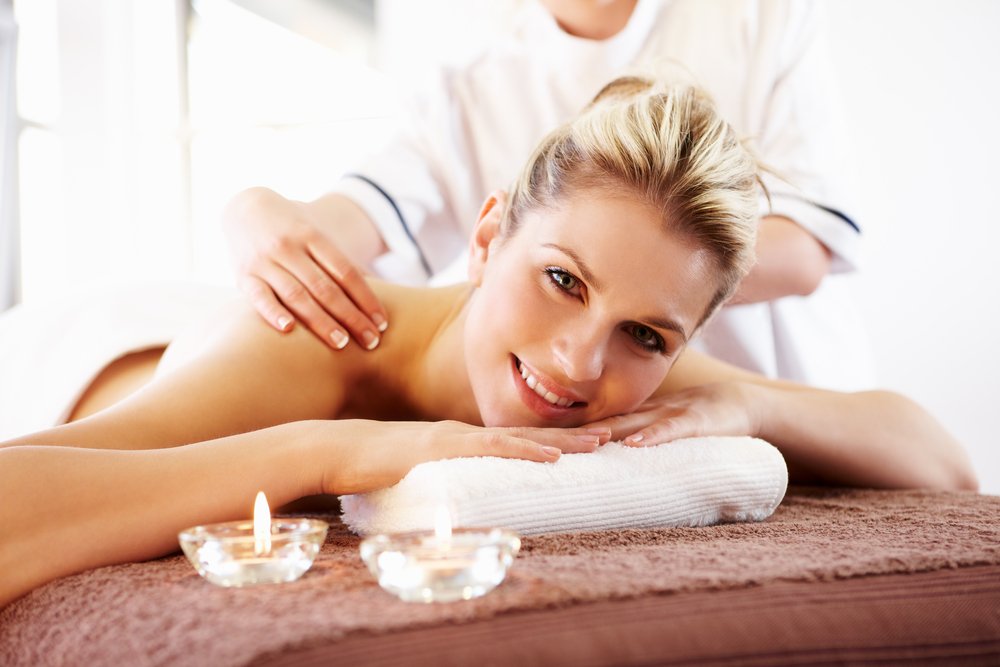
The dosage and strength of the massage are of great importance. Irrhythmic, hasty, unsystematic and rough movements, as well as excessive duration of massage can even cause pain and overstimulation nervous system, irritation of the cerebral cortex and convulsive muscle contractions. Such a massage can only bring harm.
It is also necessary to remember that all massage movements should be directed towards the nearest lymph nodes along the lymphatic tract.
You should also not start the massage suddenly and end sudden movements. First massage sessions should not be too intense and long-lasting; the muscles need special preparation for intense exposure. The patient's muscles should be as relaxed as possible. It is important to carefully record the patient’s sensations and periodically change the pressure of the fingers on the body.
Stroking. The massaging hand glides over the skin, pressing on it with varying amounts of force, but without moving the skin during this technique. The physiological effect of stroking is presented in Diagram 7.6.
Scheme 7.6. Physiological effect of stroking
The basic stroking techniques - flat and grasping - are performed with one or two hands (with the whole hand). Plane and enveloping stroking can be superficial and deep. Stroking should be done longitudinally, transversely, zigzag, circularly and spirally.
Auxiliary stroking techniques (Fig. 7.2) can be divided into 2 groups: one of them is variants of planar deep stroking (comb-shaped technique, ironing and rake-shaped technique), the other is variants of enveloping continuous stroking (cross-shaped and tong-shaped techniques).

Rice. 7.2. Massage techniques (stroking): a - stroking calf muscle with one hand (straight-line stroking); b — stroking the back muscles with one hand; c — planar stroking of the back muscles with both hands; d - grasping stroking of the thigh muscles; e - spiral stroking of the muscles of the back surface of the leg with one hand; e - circular stroking of the area ankle joint with both hands
Rubbing consists of moving, displacing or stretching tissues in different directions. The massage therapist's hand, with progressive linear or circular movements, forms a skin fold in front of itself in the form of a roller.
The technique differs from stroking in the following ways: a) when rubbing, the massaging hand does not slide over the skin, but the skin moves along with the massaging hand;
B) massage movements when rubbing can be performed both along and against the flow of lymph and blood. The physiological effect of rubbing is presented in diagram 7.7.

Scheme 7.7. Physiological effect of rubbing
Basic techniques: rubbing with fingers, the ulnar edge of the palm, the supporting part of the hand; auxiliary - comb-like rubbing technique, sawing, hatching, planing, tong-shaped rubbing technique (Fig. 7.3).

Rice. 7.3. Massage techniques (rubbing): a - rubbing the thigh muscles with the pads of the thumbs; b - rubbing back surface feet and ankle joint areas with the pads of 4 fingers supported by 1 finger; c - rubbing in the area of the elbow joint with the thumb in a spiral, supported by 4 fingers; d - rubbing the area with both hands knee joint; d - rubbing the muscles located on the dorsum of the hand with the thumbs; e - rubbing in the area of the elbow joint; g - rubbing the back muscles with the base of the palm; h - spiral rubbing of the muscles of the lumbar region with the fingertips with weights (with the other hand)
Kneading. The technique includes: a) continuous or intermittent grasping, lifting (pulling) and squeezing of tissues, or: b) grasping and alternating compression of tissues, or; c) squeezing and rubbing of tissues, or: d) shifting or stretching of tissues.
Physiological effect of kneading. When kneading, more than when rubbing, muscle tone increases, their contractile function increases, blood supply to the massaged area increases, hyperemia increases, which promotes the emptying of lymphatic and blood vessels. This technique is like passive gymnastics for the muscles (diagram 7.8).
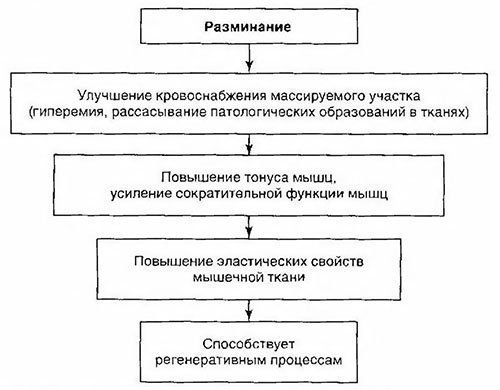
Scheme 7.8. Physiological effect of kneading
Basic kneading techniques: a) continuous, which is carried out depending on clinical indications in different directions (longitudinal, transverse, spiral); b) intermittent, the technique of which is the same, except that the movement of the hands is carried out spasmodically and rhythmically.
Auxiliary kneading techniques: pincer-like technique (squeezing), felting, rolling, sliding, twitching, stretching (traction), compression (squeezing), pressing (Fig. 7.4).
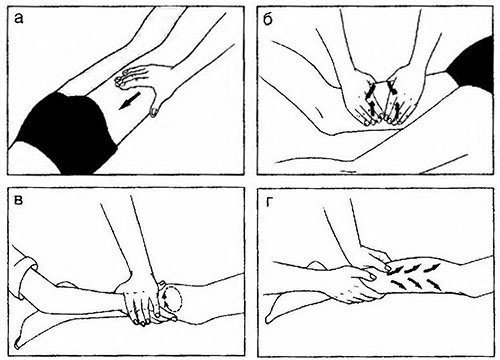
Rice. 7.4. Massage techniques (kneading): a - kneading the thigh muscles with one hand; b - double circular kneading of the thigh muscles; c - kneading with weights in the area of the lower leg muscles; d - kneading the thigh muscles using the herringbone technique
Epifanov V.A.









